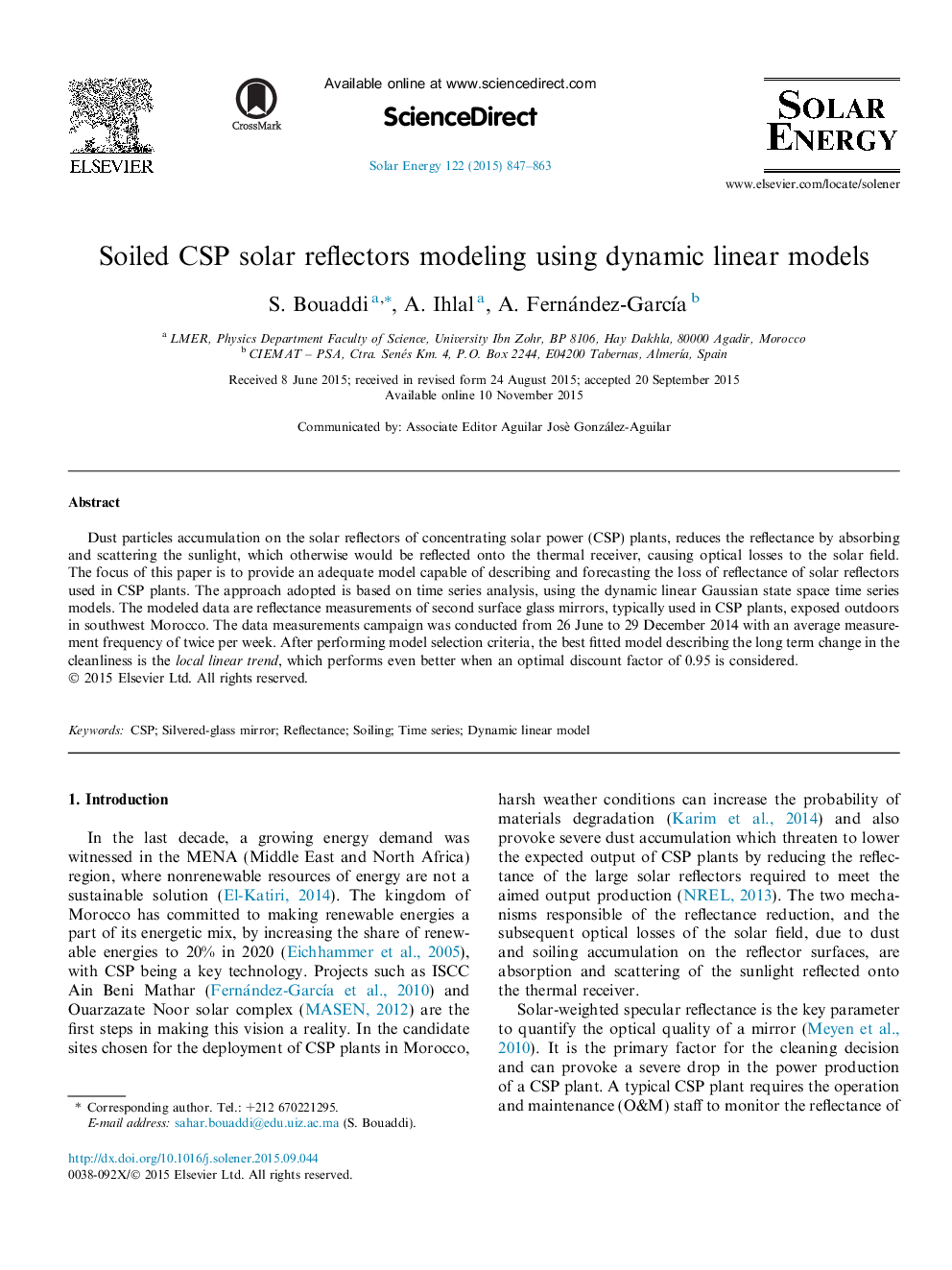| Article ID | Journal | Published Year | Pages | File Type |
|---|---|---|---|---|
| 1549630 | Solar Energy | 2015 | 17 Pages |
•Reflectance measurements from 26/06/2014 to 29/12/2014 were conducted in SW Morocco.•An adequate model to describe and forecast the loss of reflectance was provided.•The best fitted model is the local linear trend model with a discount factor of 0.95.•The second best model is the local linear trend.•Including a break point when there is a sudden change is an appropriate strategy.
Dust particles accumulation on the solar reflectors of concentrating solar power (CSP) plants, reduces the reflectance by absorbing and scattering the sunlight, which otherwise would be reflected onto the thermal receiver, causing optical losses to the solar field. The focus of this paper is to provide an adequate model capable of describing and forecasting the loss of reflectance of solar reflectors used in CSP plants. The approach adopted is based on time series analysis, using the dynamic linear Gaussian state space time series models. The modeled data are reflectance measurements of second surface glass mirrors, typically used in CSP plants, exposed outdoors in southwest Morocco. The data measurements campaign was conducted from 26 June to 29 December 2014 with an average measurement frequency of twice per week. After performing model selection criteria, the best fitted model describing the long term change in the cleanliness is the local linear trend, which performs even better when an optimal discount factor of 0.95 is considered.
Graphical abstractFigure optionsDownload full-size imageDownload as PowerPoint slide
